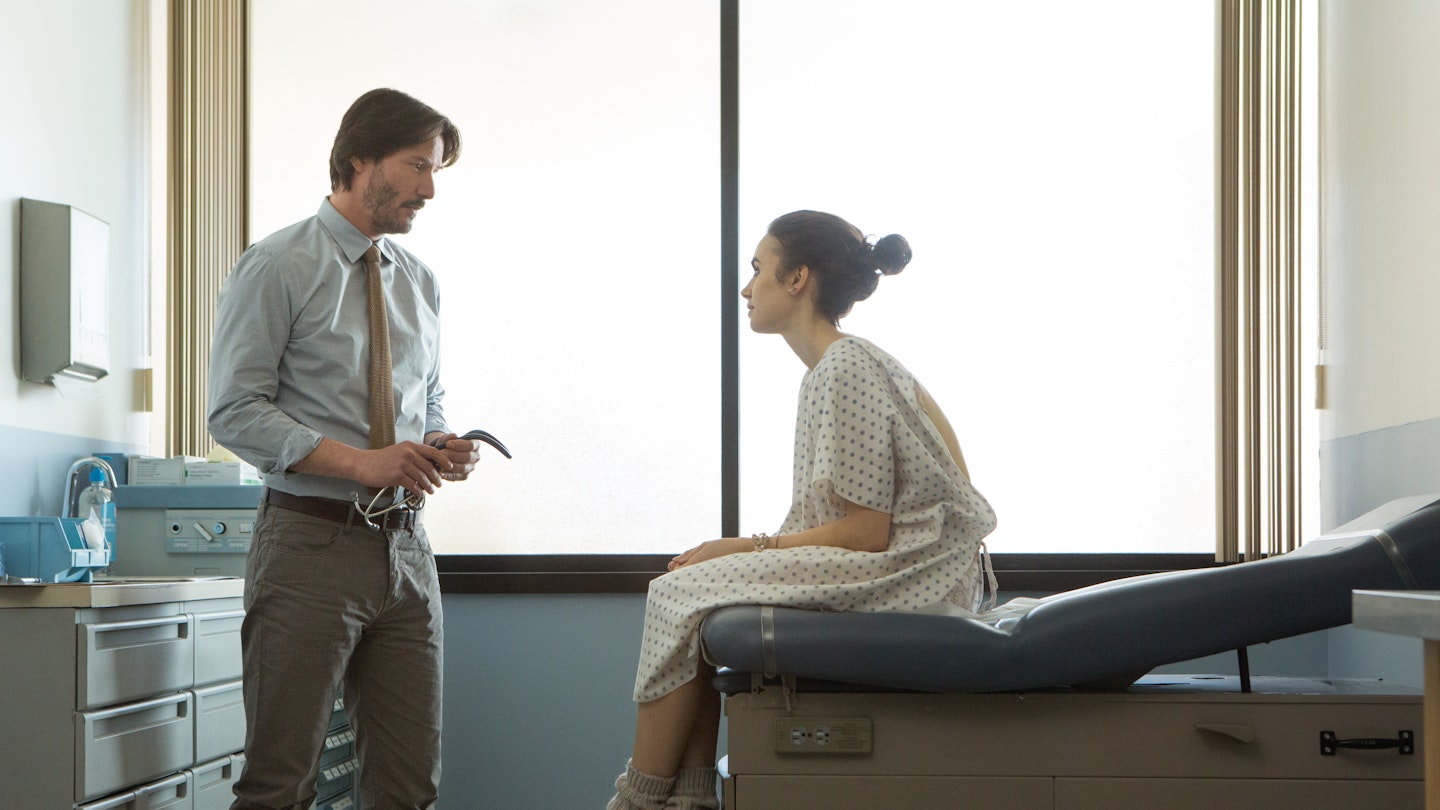Since the trailer for Marti Noxon’s To The Bone debuted, the film has been repeatedly accused of glamourising anorexia and other eating disorders. Looking at the trailer in isolation, the worry is understandable. There’s a scene where 20-year-old anorexia sufferer Ellen (Lily Collins) lists all the calories in a plate of food for her sister Kelly (Liana Liberato). “It’s like you have calorie Aspergers!” exclaims Kelly when Ellen gets all the figures right. This is, for sufferers, potentially triggering, and it’s caused a storm of controversy around the film before it’s even released on 14 July, when it will be available on Netflix.
Certainly, Kelly’s comment is not politically correct as regards the autism spectrum; it plays into outmoded stereotypes about Rain Man-style information retention. But that’s not the central criticism people are making. This talk of calories is something that sufferers of eating disorders are expressly taught not to do; it’s potentially harmful to their recovery. The larger worry, however, is that this film will make anorexia look cool, to vulnerable young people in particular. As with many other films about eating disorders, its star is a beautiful middle-class white girl, and there is a danger that people might see her as something of a role model.
Given the history of eating disorders on film, you can understand the worry. Films, books and TV shows about anorexia have historically focused on young, pretty white girls and told stories about those who think losing weight will make them prettier. From The Karen Carpenter Story, where Carpenter’s tragic decline is explicitly linked to criticism of her looks, to 1981’s The Best Little Girl In The World, where a sufferer miraculously recovers from her illness for literally no reason, on-screen portrayals of anorexia have peddled the myth that it’s simply about young girls wanting to look a certain way.
But when you see the whole of To The Bone, it becomes crystal clear that the filmmakers know all about these pitfalls and are trying very hard to do something else. The opening seconds of the very first scene see Ellen explicitly reject the idea that her illness is about looks, or the way the media portrays women, or social pressure. That calorie counting scene takes place at a time when Ellen is not in treatment; only minutes later she is instructed not to talk about calories or food with anyone. In fact sympathetic authority figures throughout the film discourage discussion of numbers – whether calories or weight or anything else – and very much communicate now-accepted ways of talking about the condition and of treating it. This film takes it absolutely as a matter of fact that anorexia and other eating disorders are mental illnesses, not a phase that some kid is going through, and Ellen goes to therapy as well as weigh-ins.
Importantly, not all of the sufferers in her residential care home are anorexics, nor are they all thin, or white, or female, or teenagers. The star herself may conform largely to the stereotype, but she’s not the disease’s only victim. And the film touches on questions about triggering and the possibility of inadvertently encouraging others further into danger, so it’s not insensitive to the risk of popularising anorexia by raising its profile. Residential home life is therefore shown in a deeply unglamorous way: there are jutting bones and hidden stashes of vomit; they’re subject to strict house rules that deny them privacy in order to keep them from self-harm. Aspirational this is not.
Both writer/director Marti Noxon – a former Buffy the Vampire Slayer writer and one of the original showrunners on UnREAL – and star Lily Collins have formerly suffered from eating disorders in the past. While Noxon’s script is very funny at times, it’s a dark humour that doesn’t make light of the underlying illness, and it comes from a place of knowledge. Collins too brings a sense of frustration and anger to Ellen; she’s not some tragic waif but a furious, capable woman who just can’t seem to figure her way out of this condition. Many of the details in To The Bone, like the techniques used by Keanu Reeves’ unconventional doctor, were inspired by Noxon’s own experience and the doctor who treated her.
"I know firsthand the struggle, isolation and shame a person feels when they are in the grips of this illness," Noxon explained in response to the backlash against the trailer. "In an effort to tell this story as responsibly as we could, we spoke with other survivors and worked with Project Heal throughout the production in the hopes of being truthful in a way that wasn’t explosive.”
To The Bone won’t tell the story of everyone who has suffered from eating disorders, of course. It can only offer a tiny glimpse of one picture. But that doesn’t mean it doesn’t have worth. It’s the first big-screen drama (it premiered at Sundance before Netflix bought it) to treat anorexia as a serious subject worthy of discussion, a mental illness and not some cute little quirk peculiar to teenage girls, and that alone is important. It might help vulnerable people to see themselves reflected onscreen, and could help their families and friends to understand and support their struggles.
There are undoubtedly criticisms of To The Bone that can be made – sure, it has a terrible trailer, it could have a more diverse cast, and perhaps it should have a trigger warning before the opening credits to really ensure its safety – but it deserves a chance to find an audience and cast a new light on a debilitating, potentially deadly condition.
READ: GLOW: Netflix's 80s Wrestling Drama Is A Surprise Knockout
READ MORE: Exclusive: Watch Lily Collins In The Trailer For Anorexia Drama 'To The Bone'
